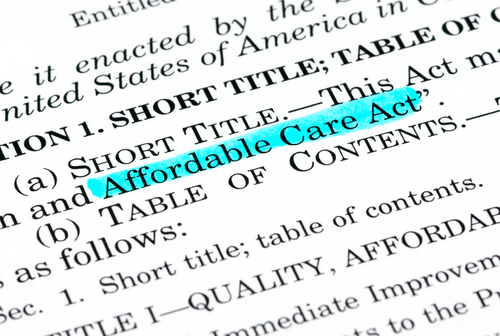 The CARES Act created the Employee Retention Credit as part of the government’s relief package to mitigate the economic impact of COVID-19. Recently, on Dec. 28, 2020, Congress enacted the Consolidated Appropriations Act, 2021, which clarified and expanded the scope of the Employee Retention Credit (ERC).
The CARES Act created the Employee Retention Credit as part of the government’s relief package to mitigate the economic impact of COVID-19. Recently, on Dec. 28, 2020, Congress enacted the Consolidated Appropriations Act, 2021, which clarified and expanded the scope of the Employee Retention Credit (ERC).
Below is a summary of the changes in key provisions of the credit and the new guidance. Noteworthy updates include a broader application of the credit and news that changes are retroactive.
Time of Availability
Previously, the credit only applied to qualified wages paid between March 12, 2020, through Dec. 31, 2020. The new legislation extends the credit period for six more months – through June 30, 2020.
Eligibility Requirements
There are two main triggers for eligibility. The first applies in all instances, with the credit available to any business whose operations were partially or totally suspended by a governmental COVID-19 order during the time the order is in effect.
The second option to become eligible differs under the new act. Previously, businesses were eligible if gross receipts were less than half of the same quarter in 2019 and remained eligible until reaching 80 percent – compared to the prior year. Under the revision, gross receipts were still compared to the same quarter in 2019. Still, beginning Jan. 1, 2021, eligibility starts at less than 80 percent for the comparable period (you don’t have to get to less than 50 percent). Further, if a business didn’t begin operations until 2020, they can compare to 2020 instead of 2019.
Percentage of Wages and Maximum Credit
The percentage of wages qualified for the credit increased from 50 percent to 70 percent. The cost of providing healthcare benefits to employees remains deductible as before.
Coupled with this is an increase in the maximum credit amount. Previously, the annual maximum credit per employee was $5,000; but starting Jan. 1, 2021, this increases to $7,000 for both the first and second quarters, for a $14,000 annual maximum.
Employer Size for Whether an Employee is Working or Not
The employer size threshold is another notable change. The original act prevented companies with more than 100 employees from taking the ERC for any employee still performing services – even if at a reduced capacity. Starting in 2021, this increases to 500 employees.
Paycheck Protection Program Loans versus ERC
Previously, companies who participated in the PPP loan program were not eligible for the Employee Retention Credit, including affiliated companies. The updated law retroactively changes this requirement. Companies that received PPP loans are now eligible for the ERC credit, but there are restrictions.
The change applies to wages paid on or after March 13, 2020. Prior PPP loan recipients cannot claim the credit for wages paid with proceeds from a PPP loan receiving forgiveness. If the company paid qualified wages over the amount of the forgiven quantity, they could claim the credit retroactively. The IRS is expected to issue more guidance on this topic.
Advance Payments
There was no advance payment option; employers were required to pay employee wages before they could receive the credit. While this is still not settled, it is expected that the IRS will draft guidance allowing for advance payment of the ERC for companies with 500 or fewer employees based on 70 percent of the average quarterly payroll for the comparable quarter in 2019.
Eligibility of Governmental Entities
Previously, the ERC was not available to governmental agencies at any level; however, starting Jan. 1, 2021, public colleges and universities, agencies that provide medical care, and select other agencies such as federal credit unions are now eligible.
Conclusion
The Consolidated Appropriations Act, 2021 extended and clarified many of the Employee Retention Credit provisions up through June 30, 2021. Overall, the ERC is expanded in terms of amount, employer size, and more flexible gross receipts test. Further, PPP loan recipients are now also eligible for the credit if they meet certain criteria.
Most likely, employers will need to file amended payroll tax returns for the second and third quarters, but guidance is still pending for this and PPP loan recipients who want to access the credit.
The changes can be complex, and compliance can be cumbersome, so if any of the information outlined above applies to you, be sure to reach out to us to help you capture the most value from the changes to the Employee Retention Credit rules.